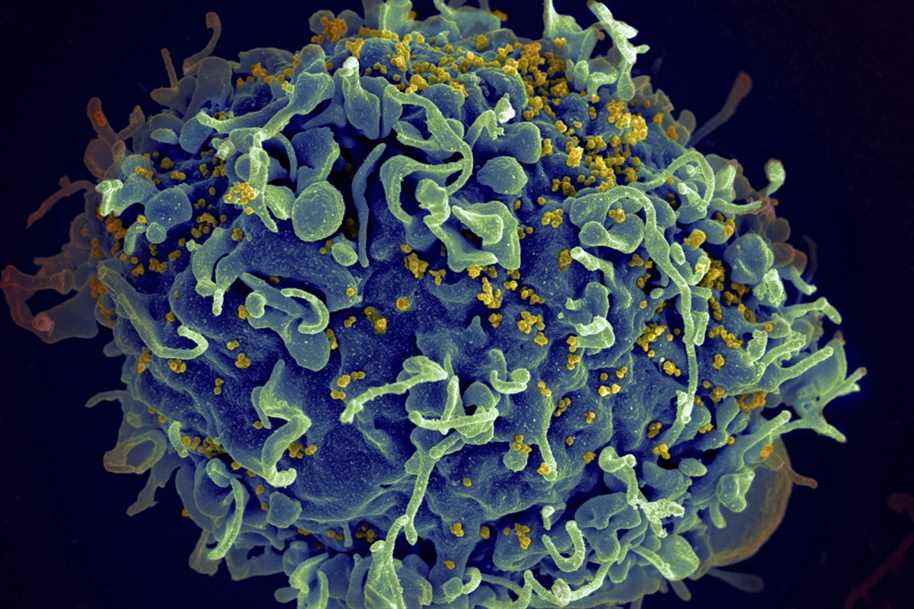Monkeys vaccinated against HIV with an experimental mRNA vaccine succeeded in developing a certain immune response against the virus, reveals a US study published in the journal Thursday Nature Medicine. But if the authors of the experiment, including Montreal researchers, qualify their approach as “promising”, their results are a reminder how much the development of an AIDS vaccine is much more complex than that against COVID-19.
The study was conducted by American researchers from the Moderna company and the National Institute of Allergies and Infectious Diseases (NIAID), joined by a team from the CHUM Research Center, represented by the professor at the department of microbiology, infectiology and immunology from the University of Montreal Andrés Finzi.
Since the discovery of the human immunodeficiency virus (HIV) in 1983, the search for a vaccine against the virus has raised both hope and disappointment. More than a hundred vaccines have been developed, but less than a dozen have been the subject of efficacy studies.
Could messenger RNA technology, which has been shown to be highly effective in combating COVID-19, be used to design an effective vaccine against AIDS? Lead author of the study, Paolo Lusso, head of the viral pathogenesis department at NIAID, writes in his article that his recipe “represents a promising approach to the development of an HIV vaccine.”
How to recognize the intruder
In order for the immune system to fight a virus, it must learn to recognize it. In the case of the COVID-19 vaccine, for example, the vaccine allows defense cells to recognize protein S, the spike that points to the surface of SARS-Cov-2.

PHOTO MARCO CAMPANOZZI, ARCHIVES THE PRESS
Andrés Finzi, researcher in immunology at the CHUM
Part of the problem with HIV is that its envelope varies enormously, making it very difficult to spot. “We have learned over the years that the envelope of HIV is like a ball of energy. You just have to look at it to see it change shape, ”says Andrés Finzi. The envelope of HIV is covered with glycans – a collection of sugars – which allow the virus to escape the vigilance of the immune system. “Kind of like Harry Potter’s Invisibility Cloak,” Mr. Finzi illustrates.
We must therefore find a way to mimic the glycoproteins in this envelope to teach the immune system to recognize HIV. The antibodies that will be developed must specifically target the “receptor binding domain” (RBD), the element of the virus envelope that allows it to enter human cells to infect them.
The vaccine developed has two components of mRNA: one which targets the envelope of HIV, and the other the protein called “Gag”, the structural component of the virus. It thus has the advantage, unlike the other vaccines tested so far, of presenting to the immune system a viral particle very similar to HIV, but obviously without its infectious character.
Vaccinated macaque monkeys received nearly ten doses over a year – yes, that’s a lot, the researchers admit – to train their immune system, before being exposed to the virus. Since primates are not vulnerable to HIV-1, which infects humans, the researchers used a different but similar virus, simian HIV (SHIV).
After exposure to the virus, the antibodies were actually generated by the immune system of the vaccinated monkeys, and the risk of infection from exposure was reduced by 79%, the researchers observed.
But these encouraging results are overshadowed by an important element: vaccine protection struggles to be maintained over a long period. Forty days after vaccination, the virus had already managed to bypass the immune defenses of more than half of the vaccinated monkeys.
In short, says researcher Finzi, “it is not enough to generate the right types of antibodies, it is also necessary that they can be maintained over time. And we are far from it ”.
Other mRNA vaccines
Moderna has other HIV mRNA vaccines in its boxes. Two of them have been the subject of phase 1 clinical trials on humans since this fall. However, their mode of operation is different from the method used by Paolo Lusso.
Andrés Finzi takes the analogy of a key inserted in a lock. In order for the door to open, you need both the right key and the energy to turn it in the lock. The vaccines being tested attempt to open the door to HIV with a truncated key – part of the antigen. The vaccine developed by Dr Lusso has the advantage of presenting a “complete key” to the immune system to recognize the antigen.
But will it be enough? The research raises a lot of hopes, recognizes Andrés Finzi. “But we did not come out of the woods. There are promising signals, but that doesn’t mean that we have something effective at the moment. ”

